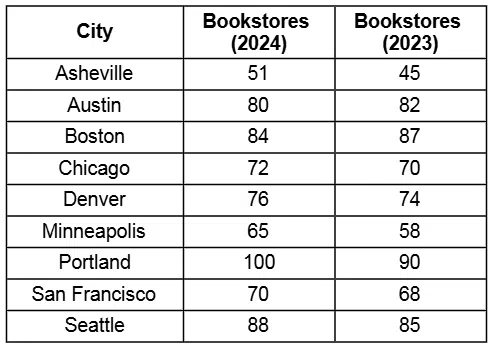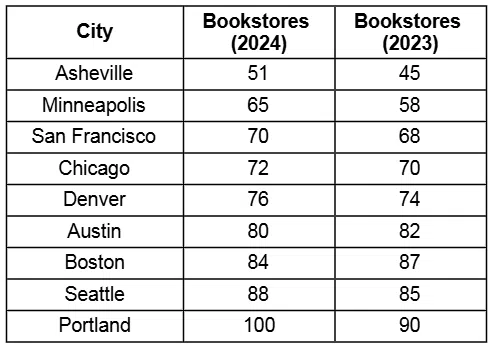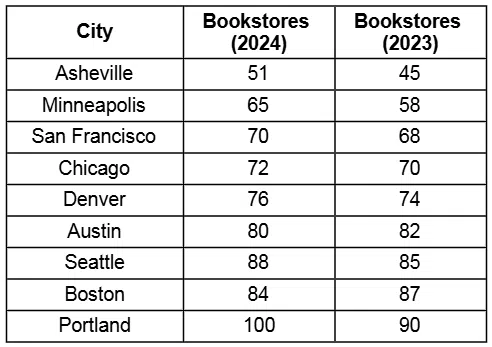GMAT Mixtures Questions With Solutions, Download PDF

GMAT Mixtures Questions are an important part of the Quantitative section, often requiring you to combine different substances or quantities. These problems involve ratios, percentages, and arithmetic. To prepare, take GMAT practice tests that include various mixture problems, such as liquid mixtures and weighted averages. Practicing these will help improve your time management, making it easier to solve problems quickly and accurately. Regularly reviewing your answers will help you identify common mistakes and improve your accuracy. Consistent practice will build your confidence and help you handle mixture questions efficiently during the actual exam.
Question 1
Pure milk costs Rs. 16 per litre. After adding water, the milkman sells the mixture at Rs. 15 per litre and thereby makes a profit of 25%. In what respective ratio does he mix milk with water?
correct answer:- 1
Question 2
In what ratio should tea powder at Rs. 90 per kg be mixed with another tea powder at Rs. 120 per kg to get a tea powder of Rs. 100 per kg?
correct answer:- 1
Question 3
4 kg of rice at Rs. 5 per kg is mixed with 8 kg of rice at Rs. 6 per kg. Find the average price of the mixture
correct answer:- 3
Question 4
A mixture of 150 L of wine and water contains 20% water. How many litres of water must be added so that water may be 25% of the mixture?
correct answer:- 3
Question 5
Ramu buys 6 liters of water at Rs 10 per liter and 4 liters of water at Rs 25 per liter. He now sells the mixture at 25% profit. Find the selling price of one liter of the mixture?
correct answer:- 2
Question 6
Two types of rice (type 1 and type 2) were mixed in the respective ratio of 1 : 3. The mixture was then sold at 75.60 per kg to gain a profit of 20%. If the price of type 1 rice is Rs. 75 per kg, what is the price of type 2 rice per kg?
correct answer:- 3
Question 7
What quantity of water should be added to 3 litres of a 10% solution of salt, so that it becomes a 5% salt solution?
correct answer:- 3
Question 8
A solution contains 50% alcohol by volume. What volume of water should be added to this solution of 100ml, so that the alcohol concentration is 25% in the resultant solution?
correct answer:- 1
Question 9
An alcohol-water mixture contains 20% water by volume. How much water should be added to this mixture of 100ml to make its concentration as 40% water.
correct answer:- 5
Question 10
In what ratio would the 2 solutions of concentration 40% and 25% be mixed to get the resultant concentration of 30%?
correct answer:- 2
Question 11
In what ratio must a grocer mix two varieties of wheat costing Rs 12 and Rs 18 respectively so as to get a mixture costing Rs 16 ?
correct answer:- 3
Question 12
A 'can' has 35L of wine in it. 3.5L of wine is taken out, and 3.5L of milk is added. Now, 3.5L of this mixture is removed, and 3.5L of milk is added in its place. After repeating this process two more times, how many litres of wine are present in the mixture? (Round off the answer)
correct answer:- 3
Question 13
Rahul drinks 3 litres of water in the mornings and 4 litres of water in the evenings. If he drinks 1239 litres of water when he went on a tour, approximately how many days did he go on the tour for?
correct answer:- 2
Question 14
In what ratio should two varieties of rice costing Rs. 4 and Rs. 10 respectively be mixed so that the resultant mixture costs Rs. 8 per kg?
correct answer:- 2
Question 15
A shopkeeper buys rice of variety A at Rs 75 per kg and rice B at Rs 100 per kg. In what ratio should he mix the two varieties to sell the resultant mixture at Rs 100 per kg and make a 25% profit?
correct answer:- 1
Question 16
In what ratio must 5% concentrated acid be mixed with 40% concentrated acid to get 25% concentrated acid?
correct answer:- 4
Question 17
The ratio of milk to water in a 120-litre mixture is 7:3. How many litres of extra water should be added so that the ratio becomes 7:5?
correct answer:- 4
Question 18
In what ratio should a type of rice at 8 Rs/kg be mixed with another type of rice at 13 Rs/kg so that the mixture is worth 10 Rs/kg?
correct answer:- 5
Question 19
An alloy A is made up of Zinc and Copper in the ratio 2 : 3 and an alloy B is made up of Zinc and Aluminium in the ratio 3 : 4. If another alloy C is made from 10 kg of alloy A and 14 kg of alloy B, then what is the proportion of Zinc present in alloy C?
correct answer:- 2
Question 20
A milk seller buys milk that contains 70% pure milk and the rest water from a dairy farm. He then further dilutes the milk he purchased from the dairy farm by adding water, amounting to 20% of the quantity he bought and sells it to his customers. What is ratio of pure milk to water in the milk sold to the customers by the milk seller?
correct answer:- 2
Question 21
A 2 litre solution of 20% hydrochloric acid is mixed with a 3 litre solution of 50% hydrochloric acid. What will be the percentage concentration of hydrochloric acid in the resultant solution?
correct answer:- 3
Question 22
Two varieties of rice, P and Q, cost Rs. 20/kg and Rs. 38/kg respectively. If they are mixed in the ratio 4:5, what will be the price (per kg) of the resultant mixture of rice?
correct answer:- 5
Question 23
Two litres of 70% sulphuric acid are mixed with 1 litre of 40% sulphuric acid. What will be the concentration of the sulphuric acid solution formed?
correct answer:- 5
Question 24
A jar contains 1 litre of pure milk. Aditya took 100 mL of the solution from the jar and replaced it with water. He repeats the process one more time. What is the final concentration of milk in the solution?
correct answer:- 2
Question 25
A solution has milk and water in the ratio 4:3. After adding 300 ml of water, the ratio of water and milk becomes 1:1. What was the initial volume of the mixture of milk and water?
correct answer:- 2
Question 26
There are 81 litres of pure milk in a container. One third of milk is replaced by water in the container. Again, one-third of the mixture is extracted, and an equal amount of water is added. What is the ratio of milk to water in the new mixture?
correct answer:- 4
Question 27
In Jar A, 180 litres of milk were mixed with 36 litres of water. Some of this mixture was taken out of Jar A and put in an empty Jar B. If after adding 6 litres of water to Jar B, the respective ratio between milk and water in Jar B was 5:2, what was the amount of mixture that was taken out from Jar A ? (in litres)
correct answer:- 4
Question 28
The cost of pure milk is Rs. 16 per litre. After adding water to the pure milk, the mixture is sold at Rs. 15/litre. In this way, the milkman earns a 25% profit. What is the ratio of milk and water in the mixture? (Assume the cost of water to be Rs 0)
correct answer:- 1
Question 29
A wholesaler blends two tea varieties, one costing Rs. 60 per kilogram and another costing Rs. 105 per kilogram. The respective ratio of quantities they were mixed in was 7:2. If he sold the mixed variety at Rs. 100 per kilogram, what was his profit percentage ?
correct answer:- 4
Question 30
A vessel contains a mixture of milk and water in the respective ratio of 10:3. Twenty-six litres of this mixture was taken out and replaced with 8 litres of water. If the resultant ratio of milk and water in the mixture was 5:2, what was the initial quantity of the mixture in the vessel ? (in litres)
correct answer:- 5
Question 31
18 litres of pure water were added to a vessel containing 80 litres of pure milk. 49 litres of the resultant mixture was then sold, and some more quantity of pure milk and pure water was added to the vessel in the respective ratio of 2:1. If the resultant ratio of milk and water in the vessel was 4:1, what was the quantity of pure milk added to the vessel? (in litres)
correct answer:- 1
Question 32
In a vessel, there is a 40-litre mixture of milk and water. There is 15% water in the mixture. The milkman sells 10 litres of mixture to a customer and thereafter adds 12.5 litres of water to the remaining mixture. What is the respective ratio of milk and water in the new mixture?
correct answer:- 2
Question 33
Jar A contains 'X' litres of pure milk only. A 27 litre mixture of milk and water in the respective ratio of 4:5 is added to jar A. If the new mixture thus formed in jar A contains 70% milk, what is the value of X?
correct answer:- 1
Question 34
The milk and water in two vessels A and B are in the ratios 4:3 and 2:3, respectively. In what ratio will the liquids in both vessels be mixed to obtain a new mixture consisting of half milk and half water in vessel C?
correct answer:- 2
Question 35
How many litres of water should be added to a 30 litre mixture of milk and water containing milk and water in the ratio of 7 : 3 such that the resultant mixture has 40% water in it?
correct answer:- 1
Question 36
A juice seller mixes 15 litres of apple juice, 20 litres of mango juice and 5 litres of litchi juice. If 5 litres of this mixture is taken out, what will be the amount of mango juice in it?
correct answer:- 5
Question 37
A vessel contains 60 litres of milk. 6 litres of milk are taken out, and 6 litres of water are added to the vessel. Again, 6 litres of mixture from the vessel is withdrawn, and 6 litres of water is added to the vessel. The ratio of milk and water in the resulting mixture in the vessel is
correct answer:- 1
Question 38
Jar A contains 78 litres of milk and water in the respective ratio of 6:7. 26 litres of the mixture were taken out from Jar A. What quantity of milk should be added to jar A, so that water constitutes 40% of the resultant mixture in jar A?
correct answer:- 5
Question 39
Jar A has 36 litres of a mixture of milk and water in the respective ratio of 5 : 4. Jar B, which had 20 litres of mixture of milk and water, was emptied into jar A, and as a result in jar A, the respective ratio of milk and water becomes 5: 3. What was the quantity of water in jar B?
correct answer:- 1
Question 40
Jar A has 60 litres of a mixture of milk and water in the respective ratio of 2 : 1. Jar B, which had 40 litres of a mixture of milk and water, was emptied into jar A, as a result in jar A, the respective ratio of milk and water became 13 : 7. What was the quantity of water in jar B?
correct answer:- 2
Question 41
A Kg of coffee powder costs Rs. 30, and a kg of Chicory costs Rs. 10. In what ratio must a shopkeeper mix these 2 ingredients (coffee:chicory) if he wants to earn a profit of 50% by selling the mixture at Rs. 37.5?
correct answer:- 2
Question 42
Two liquids A and B are mixed in the ratio 2:5 to obtain mixture X. In what ratio must mixture X and liquid A be combined if the concentration of liquid A in the final mixture must be 50%?
correct answer:- 3
Question 43
A mixture contains 80 % milk and 20 % water. ‘x’ percent of this solution is taken out and replaced with water. What should be the value of ‘x’ so that the resultant solution is half milk and half water?
correct answer:- 4
Question 44
A milkman has 200 litres of pure milk with him. He sells 15% of the pure milk and replaces it with water. He again sells 20% of the solution and replaces it with water. What is the quantity of pure milk left in the mixture?
correct answer:- 3
Question 45
A mixture P contains milk and water in the ratio of 5 : 1. Another mixture Q contains milk and water in the ratio of 3 : 2. If equal quantities of P and Q are mixed, what is the ratio of milk and water in the final mixture?
correct answer:- 3
Question 46
A solution containing milk and water in the ratio 3 : 1 is mixed with twice the amount of another solution containing milk and water in the ratio 2 : 1. What is the percentage of milk in the final mixture?
correct answer:- 2
Question 47
Jar A contains 70% milk, and the rest is water, whereas Jar B contains 60% water and the rest is milk. How many litres of solution A should be mixed with 100 litres of solution B to make a 50% water-milk solution?
correct answer:- 5
Question 48
In 820 litres of a mixture, the ratio between the quantities of milk and water is 4:1, respectively. If 40 litres of the mixture is taken out and some quantity of water is added, then the ratio between the quantities of milk and water will be 3:1, respectively. Find out the quantity of water that was added to the mixture.
correct answer:- 5
Instruction for set :
City

Bookstores (2024)

Bookstores (2023)

Question 49
The table above shows the number of independent bookstores in various cities.
For each of the following statements, select True if the statement can be verified as true based on the information provided. Otherwise, select False.
[columns: True, False]
correct answer:- 112